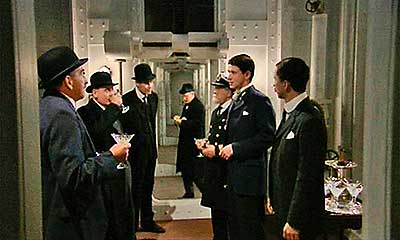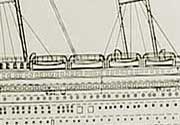VIRTUALLY UNSINKABLE

BULKHEADS AND WATERTIGHT DOORS
The Titanic’s ‘unsinkable’ reputation was won off the back of the design of her bulkheads. These were 15 compartments that could be sealed off using watertight doors. Harland & Wolff claimed that these bulkheads could be hermetically sealed in the event of any damage and that the Titanic would stay afloat even if four bulkheads were completely flooded.
to sail on Titanic's maiden voyage but fortunately, was too ill to travel.
In reality there were some flaws with this design. Firstly, only about 12 of the watertight doors could be closed remotely, the rest (about 30) had to be closed by hand. Secondly, the bulkheads only reached 10 foot (3m) above the water line allowing water to slosh from one compartment to another and defeating their purpose.
Although Harland & Wolff never claimed she was unsinkable they were confident enough in their design to claim that she was ‘virtually unsinkable’ and that she could ‘act as her own lifeboat’.
In the event, the iceberg ripped through six of the bulkheads.
LIFEBOATS
The issue of lifeboats for the Titanic caused a huge row in a terrible premonition of future events. In a furious head to head with Lord Pirrie the original designer, Alexander Carlisle, insisted that the Titanic should carry more lifeboats than were in the plans. Lord Pirrie said that the plans included enough lifeboats to meet the requirements set by the Board of Trade. Carlisle argued that the regulations were out of date. That a ship of the Titanic’s size had never been built before and therefore no regulations existed to cover her – more lifeboats were needed. Lord Pirrie stuck to his guns insisting that the sight of more lifeboats cluttering up the deck spaces would be off putting to the passengers and make them feel unsafe.

There was no arguing with Lord Pirrie once he had made up his mind. In the spring of 1910 Carlisle, convinced that having so few lifeboats for so many passengers was irresponsible, resigned from Harland & Wolff after 40 years with the company.
In the end, the Titanic was given a safety certificate to carry 3,320 passengers and crew with enough lifeboats for 1,178 people – about one third of them.

